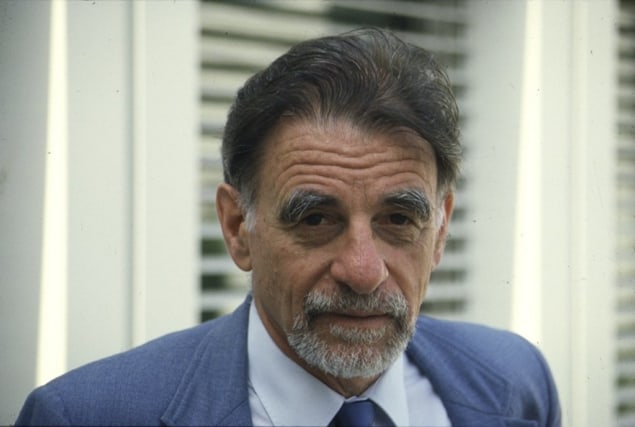
The Swiss condensed-matter physicist and Nobel laureate Alex Müller died on 9 January at the age of 95. Müller shot to fame in 1986 when he and his colleague Georg Bednorz discovered a material with a superconducting transition temperature far above those of so-called conventional metal superconductors. The work earned the pair the Nobel Prize for Physics the following year.
Born on 20 April 1927 in Basel, Müller received a diploma in physics and mathematics from the Swiss Federal Institute of Technology (ETH) in Zürich in 1952. After graduating, he stayed on at ETH Zurich to study paramagnetic resonance of solid-state materials, obtaining his PhD in 1958.
Following a stint as head of the magnetic-resonance group at the Battelle Memorial Institute in Geneva, he took up a position at the University of Zurich in 1962. A year later he also joined IBM Research Zurich, heading the physics department from 1971. In 1985 he left IBM but remained at the University of Zurich before retiring in 1994.
During his life, Müller published several groundbreaking papers in the field of magnetic resonance and phase transitions in ferroelectrics. At IBM and Zurich he also began working on oxide materials, especially perovskites, which would later be useful in his work in superconductivity in the 1980s.
Fighting for acceptance
It has been known for more than a century that when certain metals are cooled to extremely low temperatures, they become superconductors, conducting electrical current without resistance. But as materials had to be cooled to just a few degrees above absolute zero for this phenomenon to occur, research in to the field began to stagnate.
That all changed, however, in 1986, when Müller and Bednorz discovered that a material composed of copper oxide with lantanum and barium became superconducting at around 35 K. This was about 50% higher than the previous highest value of 23 K, which had been achieved more than a decade earlier in niobium-germanium (Nb3Ge).
Given that oxide materials are ceramics and are known to conduct poorly at higher temperatures, their finding did not convince everybody, with some researchers believing the materials were not exhibiting superconductivity.
“It was disappointing seeing their reaction,” Bednorz later told Physics World in 1988. “We had the impression that they didn’t believe what we had found out and after that experience we were convinced that we would have to fight for one, two or even more years to get our results accepted in the scientific community.” Resistance is futile
The results, however, were soon confirmed by other researchers, with Müller and Bednorz being credited with having discovered an entirely new class of superconductors. The buzz surrounding these so-called “cuprate superconductors” reached fever pitch at the American Physical Society’s March Meeting in New York in 1987. The meeting was later dubbed “the Woodstock of physics” due to the fervent nature of the talks and discussions that went on late into the night.
In 1987 Bednorz and Müller shared the Nobel Prize for Physics “for their important break-through in the discovery of superconductivity in ceramic materials”. The finding sparked decades of research into similar cuprate materials where superconducting transition temperatures over 100 K were later discovered, which Müller followed “with great interest and commitment”.



